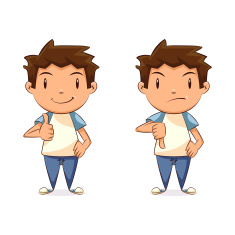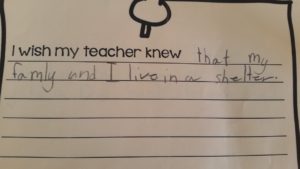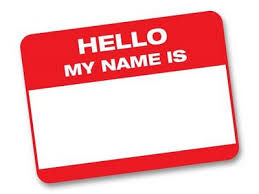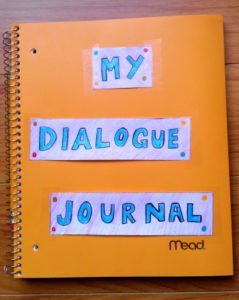 Connecting with students, especially in a somewhat time-efficient manner, is always a challenge. As the new school year bursts out of the gate, teachers are often looking for ways to quickly begin forming meaningful relationships with their students. One of the most powerful ways to make a deposit into a relational account with a student (or with anyone, really) is to demonstrate your personal interest in that person’s life. But how to do this when there are many of them and just one of you? Here are a few simple, creative, powerful ways of doing just that.
Connecting with students, especially in a somewhat time-efficient manner, is always a challenge. As the new school year bursts out of the gate, teachers are often looking for ways to quickly begin forming meaningful relationships with their students. One of the most powerful ways to make a deposit into a relational account with a student (or with anyone, really) is to demonstrate your personal interest in that person’s life. But how to do this when there are many of them and just one of you? Here are a few simple, creative, powerful ways of doing just that.
 1) Thumbs Up / Thumbs Down. I often start activities using this exercise – classes, as well as workshops and even work meetings. This is, by far, the fastest way to dip into your group’s current emotional reality. Ask: “How is everyone doing? [demonstrate with your own thumb] Thumbs up if it’s the best day ever, thumbs down if you wish you never got out of bed today, and anywhere in the middle if you’re anywhere in the middle. Stick your thumb out quietly – you don’t have to give any reasons for why your thumb is up or down. Look around and remember: Everybody is having a day.”
1) Thumbs Up / Thumbs Down. I often start activities using this exercise – classes, as well as workshops and even work meetings. This is, by far, the fastest way to dip into your group’s current emotional reality. Ask: “How is everyone doing? [demonstrate with your own thumb] Thumbs up if it’s the best day ever, thumbs down if you wish you never got out of bed today, and anywhere in the middle if you’re anywhere in the middle. Stick your thumb out quietly – you don’t have to give any reasons for why your thumb is up or down. Look around and remember: Everybody is having a day.”
As you observe responses, make mental notes for students you want to talk with later on. Starting with “I noticed your thumb was…” is a great way to enter into a more personal conversation by showing that you notice and care about the other person. This is also a great way to help students connect with each other, simply by looking around and seeing the different moods people are in.
 2) I Wish My Teacher Knew. Hand your students notes with the writing prompt “I wish my teacher knew…” and invite them to complete the sentence. Tell them they don’t have to write their names. Prepare to learn a lot of very personal details about your students – and be sure to follow up respectfully and sensitively. This method is now famous thanks to Kyle Schwartz, who literally wrote the book about it. You can read a shorter article about it here.
2) I Wish My Teacher Knew. Hand your students notes with the writing prompt “I wish my teacher knew…” and invite them to complete the sentence. Tell them they don’t have to write their names. Prepare to learn a lot of very personal details about your students – and be sure to follow up respectfully and sensitively. This method is now famous thanks to Kyle Schwartz, who literally wrote the book about it. You can read a shorter article about it here.
You can create many variations on this exercise. One variation that can help students connect more with one another involves simply changing the prompt from “I with my teacher knew” to “I wish other students knew” and then putting the notes on a wall for all to see – anonymously or not.
 3) Who Are You. This is a somewhat less intense variation on the “I Wish My Teacher Knew” method (above). Ask students to write down 5 things about themselves that you don’t already know based on their school records or on what you can see (e.g., “I took Latin last year” or “I have curly hair”). These will help you get a more personalized sense of who your students are, and can provide topics of conversation with your students, either in-person or using dialogue journals (below).
3) Who Are You. This is a somewhat less intense variation on the “I Wish My Teacher Knew” method (above). Ask students to write down 5 things about themselves that you don’t already know based on their school records or on what you can see (e.g., “I took Latin last year” or “I have curly hair”). These will help you get a more personalized sense of who your students are, and can provide topics of conversation with your students, either in-person or using dialogue journals (below).
 4) Dialogue Journals. This method is the most time intensive, but offers correspondingly greater rewards in terms of creating strong personal relationships with students. Dialogue journals are ongoing written conversations between teacher and students in the form of a letter exchange or correspondence. There are many variations to this method: Some teachers prefer a more one-sided communication, in which the teacher asks the questions and comments on what the student writes, while other teachers prefer a two-way correspondence, in which students can ask about the teacher (e.g., “do you have siblings?” “what do you do when you’re not at school?”). Some teachers prefer for students to write the first entry/letter, and others prefer to kick off the journal by writing the first entry/letter. The frequency can vary widely. But the important point is that this is an incredible opportunity for developing a true one-on-one dialogue with students about whatever it is that they want to talk about with you. Imagine the possibilities. For a more detailed description of one teacher’s approach to using dialogue journals, see this post from CultOfPedagogy.com.
4) Dialogue Journals. This method is the most time intensive, but offers correspondingly greater rewards in terms of creating strong personal relationships with students. Dialogue journals are ongoing written conversations between teacher and students in the form of a letter exchange or correspondence. There are many variations to this method: Some teachers prefer a more one-sided communication, in which the teacher asks the questions and comments on what the student writes, while other teachers prefer a two-way correspondence, in which students can ask about the teacher (e.g., “do you have siblings?” “what do you do when you’re not at school?”). Some teachers prefer for students to write the first entry/letter, and others prefer to kick off the journal by writing the first entry/letter. The frequency can vary widely. But the important point is that this is an incredible opportunity for developing a true one-on-one dialogue with students about whatever it is that they want to talk about with you. Imagine the possibilities. For a more detailed description of one teacher’s approach to using dialogue journals, see this post from CultOfPedagogy.com.
What are your favorite ways of forming personal connections with your students? Post a comment on our blog, or tweet with the hashtag #HowTeachersConnect .
